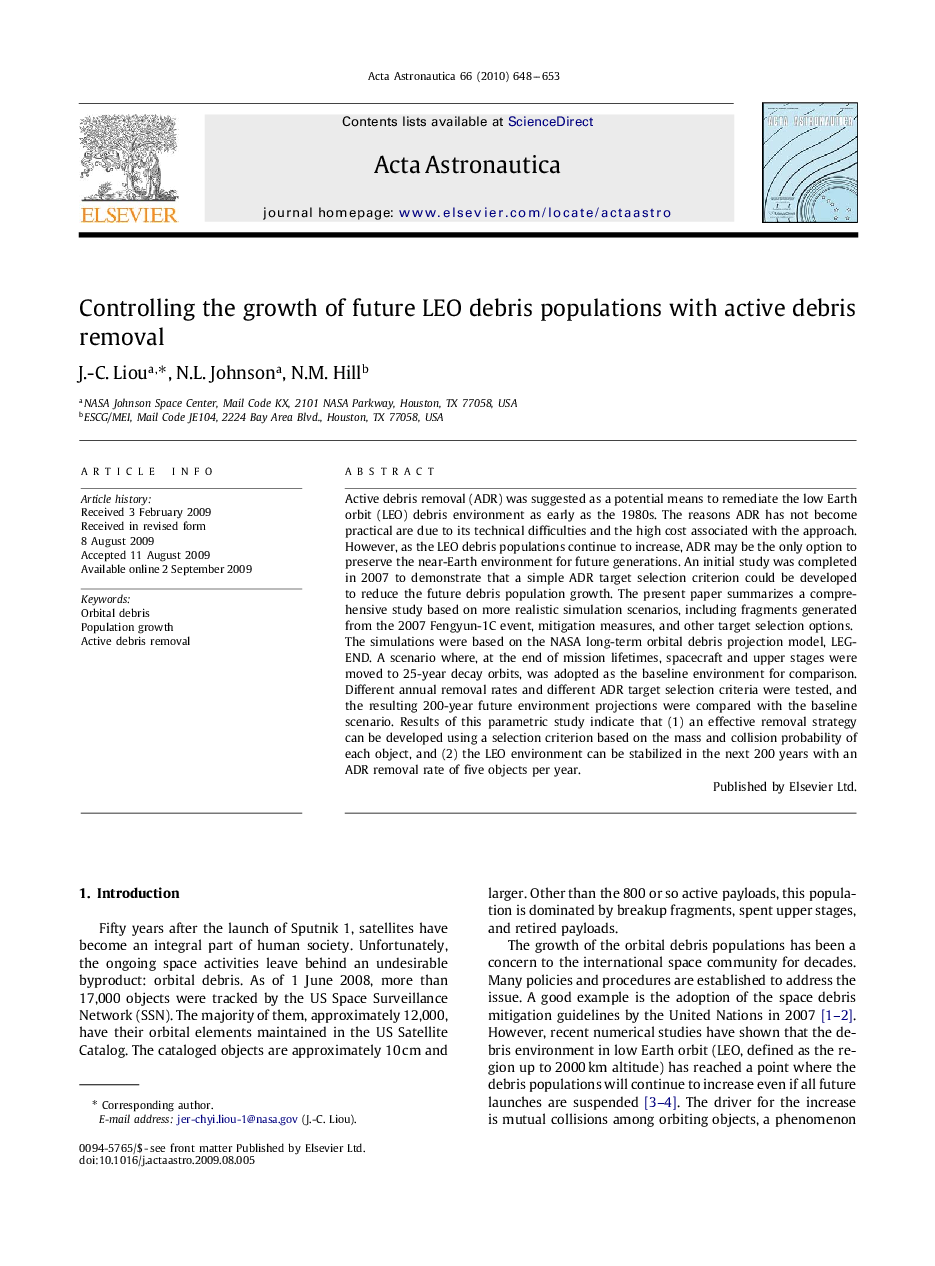| کد مقاله | کد نشریه | سال انتشار | مقاله انگلیسی | نسخه تمام متن |
|---|---|---|---|---|
| 1716383 | 1520000 | 2010 | 6 صفحه PDF | دانلود رایگان |

Active debris removal (ADR) was suggested as a potential means to remediate the low Earth orbit (LEO) debris environment as early as the 1980s. The reasons ADR has not become practical are due to its technical difficulties and the high cost associated with the approach. However, as the LEO debris populations continue to increase, ADR may be the only option to preserve the near-Earth environment for future generations. An initial study was completed in 2007 to demonstrate that a simple ADR target selection criterion could be developed to reduce the future debris population growth. The present paper summarizes a comprehensive study based on more realistic simulation scenarios, including fragments generated from the 2007 Fengyun-1C event, mitigation measures, and other target selection options.The simulations were based on the NASA long-term orbital debris projection model, LEGEND. A scenario where, at the end of mission lifetimes, spacecraft and upper stages were moved to 25-year decay orbits, was adopted as the baseline environment for comparison. Different annual removal rates and different ADR target selection criteria were tested, and the resulting 200-year future environment projections were compared with the baseline scenario. Results of this parametric study indicate that (1) an effective removal strategy can be developed using a selection criterion based on the mass and collision probability of each object, and (2) the LEO environment can be stabilized in the next 200 years with an ADR removal rate of five objects per year.
Journal: Acta Astronautica - Volume 66, Issues 5–6, March–April 2010, Pages 648–653